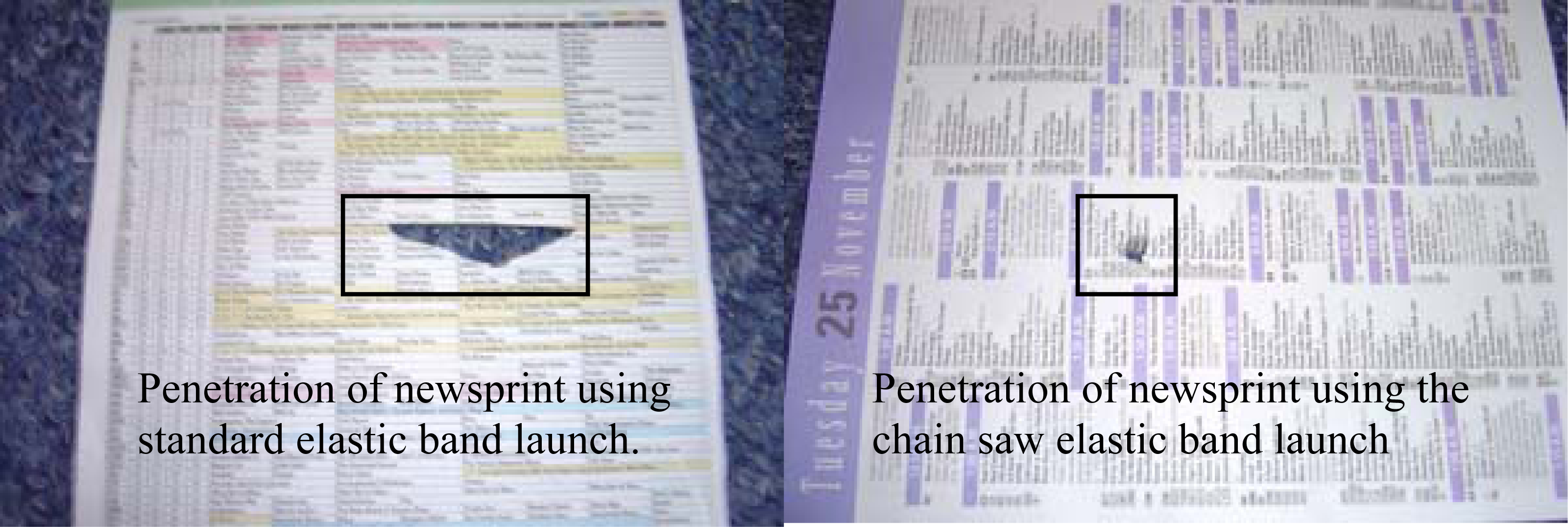Rotational Motion and the Chain Saw
January 01, 2005 Filed in:
Demo CornerJohn Caranci
physix1@look.ca
This demonstration is used to introduce rotational motion by using the complex motion of a chain-saw chain. You probably have seen many demonstrations over the years but this is one that can be done with the simplest equipment: one elastic band and a sheet of newsprint.
It might be disadvantageous to do this in middle school or junior secondary classes for obvious safety concerns but it can be used at any level with appropriate safety cautions. This is an exciting introduction to complex rotational motion.
The technique is simple but requires a little practice. The elastic band is held at the tips of the index fingers with palms facing out (first picture). The left hand is rotated 90° counterclockwise (second picture) so that the two index fingers are right above each other, palms facing down. This gives the right strand of the elastic a slight bit more tension than the left strand. The left hand is then rotated 180° counterclockwise, but while the movement is done the second finger of the left hand is placed inside the elastic at about ¼ to ⅓ of the way down the right strand (pictures three and four). The second finger of the left hand is now the active finger and the index finger is relaxed and let go. This provides a right strand that is much more taut than the left one. It is now ready for launching.

When launched, the elastic forms a flattened ring that moves as a chain saw moves.
The first launch is to compare distance. An elastic band is fired at the back of the class in the normal fashion. Then the band as described above is fired. The results are very different. Try it for accuracy and the results are also very different.
The most telling phenomenon is power to move through a barrier. A piece of newsprint held taut is shown below.
Many senior secondary and first-year students can analyze these phenomena in many ways. Be true to the demonstration and do not give away solutions.

Column Editor: Ernie McFarland, Physics Department, University of Guelph, Guelph, Ontario, N1G 2W1 Tags: Motion



